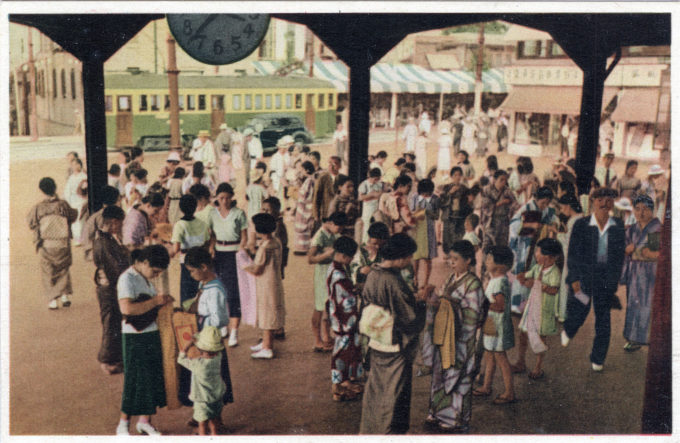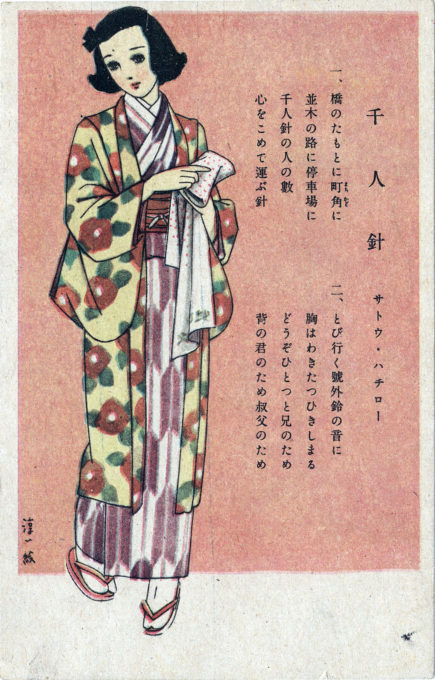
Gathering ‘Thousand-person Stitches’ (Sennin-bari) propaganda postcard, c. 1940, on the plaza of a railway station.
See also:
“Assembling a comfort bag” propaganda and advertising postcard, c.1940.
Nakahara Jun’ichi fashion illustrations, c. 1945-1948.
“A sennin-bari (千人針 thousand-person-stitches) is a strip of cloth, approximately one metre in length, decorated with 1000 stitches, given as an amulet by women to soldiers on their way to war.
“A sennin-bari haramaki (‘1,000 stitch belt’) could be made by a man’s mother, sister, or wife if married, who would stand near their local temple, train station, or department store and ask any female passerby to contribute to the war effort by sewing a French knot stitch into the belt. During the most hectic days of the War in order to meet demand, women’s patriotic organizations would gather to make senninbari en masse. These were then placed in imonbukuro or comfort bags and sent overseas to the soldiers.
Propaganda postcard illustrated by Nakahara Jun’ichiro, c. 1945, to accompany the lyrics of the wartime song, “Thousand-Person Stitches”, by Satou Hachiro.
At the foot of a bridge / at a town corner on a tree-lined street / at a stop sign
Thousands of Needles / entering the City
Needles carried with all my heart.“Sennin-bari were most commonly made from white cloth; yellow, red, green, and blue cloth was also used. Stitching was usually done in red but a range of other colours were sometimes used. The stitches were often arranged in multiple rows but might also be placed in patterns creating images of flags, patriotic slogans and tigers. The most common slogan was ‘bu-un cho-kyu’ for ‘eternal good luck in war’. Tigers were popular as they were known to roam far from home and then safely return.
“The custom of producing sennin-bari originated during the First Sino-Japanese War of 1894-1895. There were soldiers who rejected the belief that sennin-bari haramaki could protect them from harm. Instead, some felt that the belts empowered them to inflict great damage upon the enemy before offering up their own life in battle. Others used the haramaki for warmth while those more sentimental wore sennin-bari haramaki as a devotional to a loved one back home.”
– Wikipedia



Pingback: Patriotic Women’s Association postcard series, c. 1940. | Old Tokyo